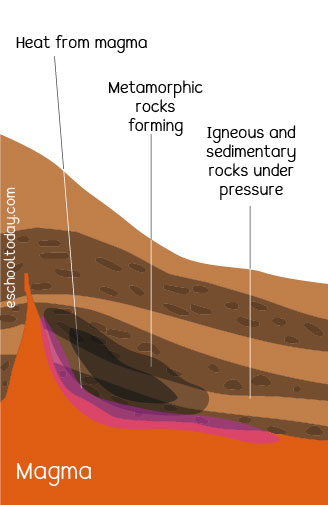- Rocks
Metamorphic rocks

Metamorphic rocks are the least common of all the three types of rocks. They are igneous and sedimentary rocks that have been transformed under extreme heat and pressure.
‘Metamorphic’ originates from the Greek word ‘Meta’ which means ‘change’ and ‘morph’ which also means ‘form’.
Earth’s movements cause rock beds to shift and move. The movement causes other rock types to be squeezed, putting them under extreme pressure.
With time, extreme pressure and heat cause some chemical changes to occur, transforming the original rocks into metamorphic rocks.
The heat from the magma beneath the crust, geothermal heat, and heat from friction along faults are the main sources of heat that cause the existing rocks to change form. Metamorphic activities occur in heat between 300° and 1470° Fahrenheit.
Even though they do not melt like magma, the extreme heat causes the rocks to change form. Two good examples include slate or gneiss, which is formed from shale, and marble, which is formed from limestone.
